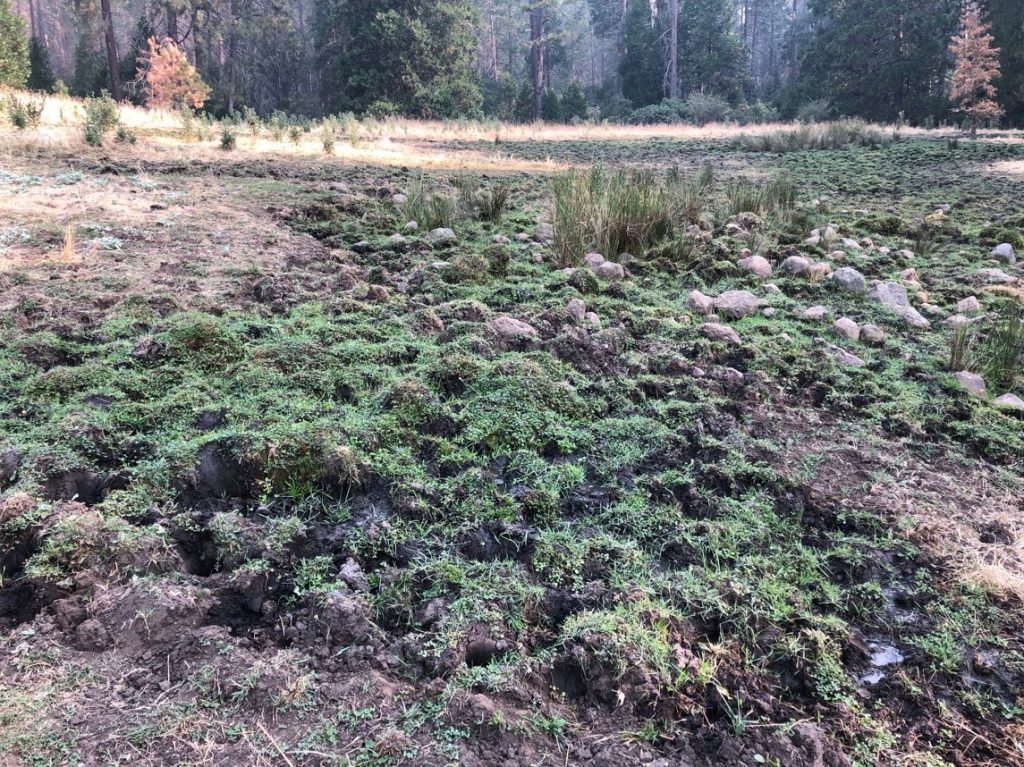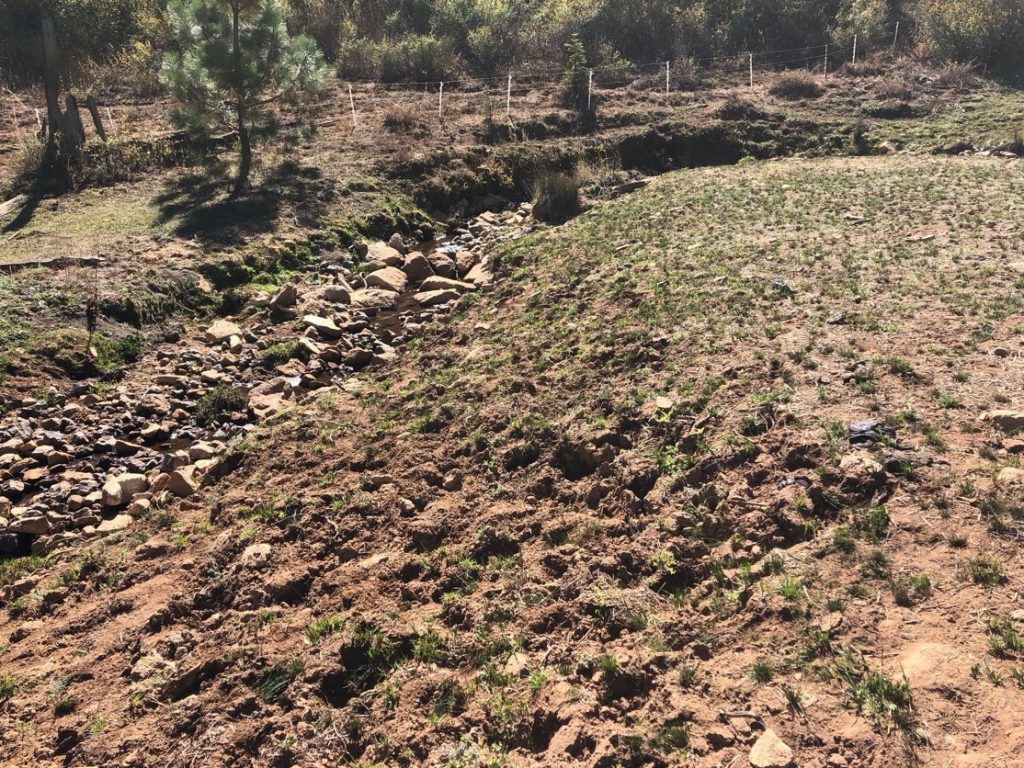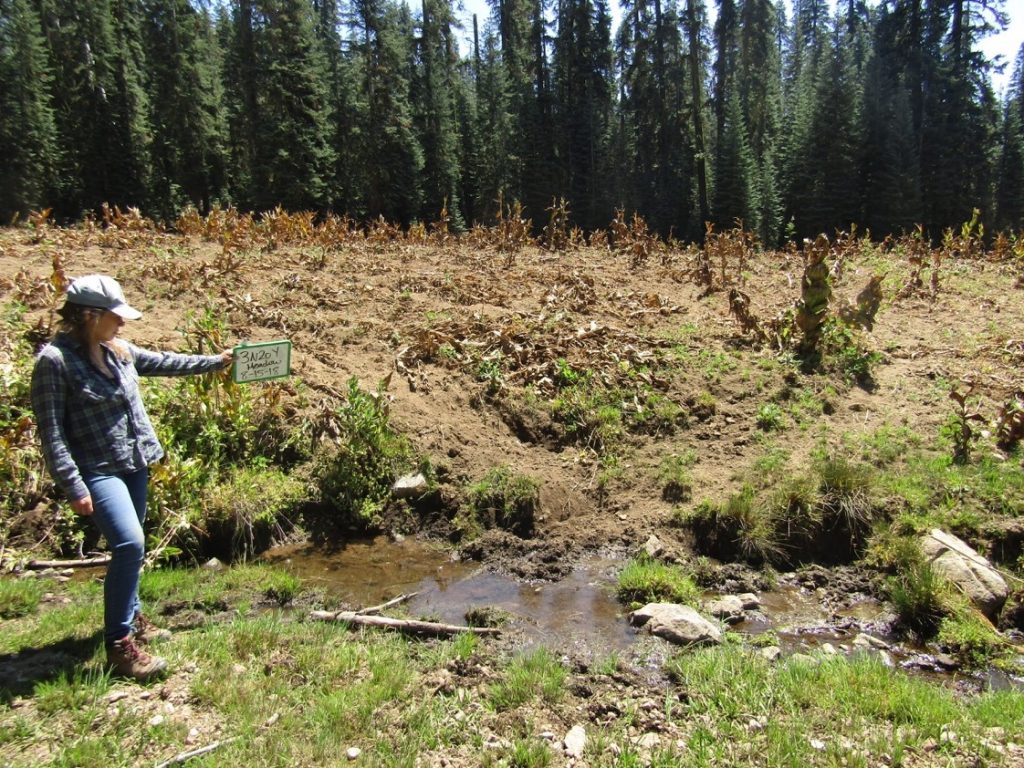When visiting national forest lands during the summer/fall grazing season, many CSERC members have observed the negative impacts of damage caused by livestock. Over the past two decades CSERC biologists have monitored selected meadows to take photos and measure grass heights prior to cows being brought onto the Stanislaus Forest by local grazing permittees. Then CSERC repeats the same monitoring near the end of the grazing season in September or October — taking comparison photos and measurements.
At some meadows CSERC monitored this year, significant overgrazing by livestock once again resulted in meadow damage and trampled or chiseled streambanks and overgrazed riparian areas. The photos shown with this article are prime examples of permittees not removing cattle from grazing allotments before the cattle exceed thresholds that are supposed to be legally enforced by Forest officials.
Last year CSERC filed litigation against the Stanislaus Forest for failing for more than a decade to enforce the agency’s clear legal requirements when it comes to livestock grazing. That legal process continues to unfold – demanding a significant amount of CSERC staff time and legal expenses. A decision on CSERC’s lawsuit is not expected until near the end of this year. But even as that process continues, CSERC has documented sites where new violations occurred this season. These meadow photos show examples of those impacts.

This photo shows springs heavily pocked and trampled in the Deer Creek area.

This photo shows an incredibly pocked and trampled area adjacent to a creek at Lower Fahey Meadow. The streambanks suffered from a winter runoff blowout of restoration work that was done to attempt to stabilize the area. Livestock impacts added to the site’s damage.

Meadow and stream area where monitoring documented heavily trampled and overgrazed conditions that violate agency regulations.

